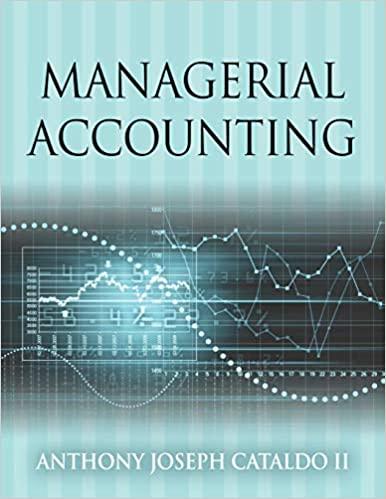Question
13.5.6 Williams Optical Inc. is considering a new lean product cell. The present manufacturing approach produces a product in four separate steps. The production batch
13.5.6
Williams Optical Inc. is considering a new lean product cell. The present manufacturing approach produces a product in four separate steps. The production batch sizes are 45 units. The process time for each step is as follows:
| Process Step 1 | 5 minutes |
| Process Step 2 | 8 minutes |
| Process Step 3 | 4 minutes |
| Process Step 4 | 3 minutes |
The time required to move each batch between steps is 5 minutes. In addition, the time to move raw materials to Process Step 1 is also 5 minutes, and the time to move completed units from Process Step 4 to finished goods inventory is 5 minutes.
The new lean layout will allow the company to reduce the batch sizes from 45 units to 3 units. The time required to move each batch between steps and the inventory locations will be reduced to 2 minutes. The processing time in each step will stay the same.
Determine the value-added, non-value-added, and total lead times, and the value-added ratio under the present and proposed production approaches. If required, round percentages to one decimal place.
| Present Approach | Proposed Approach | |||
| Value-added time | ___ | min | ___ | min |
| Non-value-added time | ___ | min | ___ | min |
| Total lead time | ___ | min | ___ | min |
| Value-added ratio (as a percent) | ___ | % | ___ | % |
Williams Optical Inc. manufactures eye glasses. Each pair requires $119 per unit of direct materials. The manufacturing assembly cell includes the following estimated costs for the period:
| Glass assembly cell, estimated costs: | ||
| Labor | $50,330 | |
| Depreciation | 6,750 | |
| Supplies | 2,460 | |
| Power | 1,840 | |
| Total cell costs for the period | $61,380 | |
The operating plan calls for 165 operating hours for the period. Each pair requires 15 minutes of cell process time. The unit selling price for each speaker is $322. During the period, the following transactions occurred:
- Purchased materials to produce 395 speaker units.
- Applied conversion costs to production of 375 glass units.
- Completed and transferred 360 speaker units to finished goods.
- Sold 345 speaker units.
There were no inventories at the beginning of the period.
a. Journalize the summary transactions (1)-(4) for the period. Round the per unit cost to the nearest cent and use in subsequent computations. If an amount box does not require an entry, leave it blank.
| 1. | Raw and In Process Inventory | ___ | __ |
| Accounts Payable | ___ | __ | |
| 2. | Raw and In Process Inventory | ___ | ___ |
| Conversion Costs | ___ | ___ | |
| 3. | Finished Goods Inventory | ___ | ___ |
| Raw and In Process Inventory | ___ | ___ | |
| 4. Sale | Accounts Receivable | ___ | ___ |
| Sales | ___ | ___ | |
| 4. Cost | Cost of Goods Sold | ___ | ___ |
| Finished Goods Inventory | ___ | ___ |
b. Determine the ending balance of raw and in process inventory and finished goods inventory.
| Raw and In Process Inventory, ending balance | ___ |
| Finished Goods Inventory, ending balance | ___ |
Step by Step Solution
There are 3 Steps involved in it
Step: 1

Get Instant Access to Expert-Tailored Solutions
See step-by-step solutions with expert insights and AI powered tools for academic success
Step: 2

Step: 3

Ace Your Homework with AI
Get the answers you need in no time with our AI-driven, step-by-step assistance
Get Started


